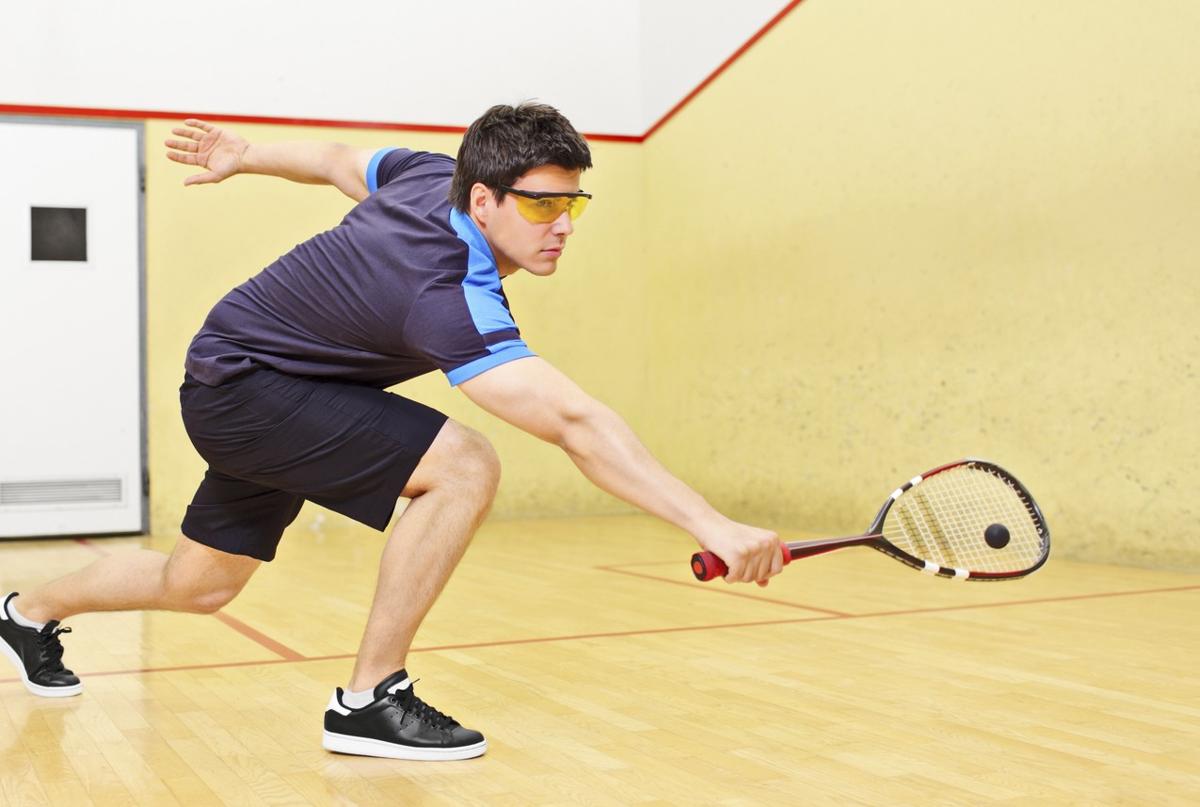
As with all racket sports, using the correct grip is vital to help your game. If you regularly play other sports, then you will need to learn to adapt your grip to squash. The strokes and skills required are very different to other racket sports.
The Correct Grip
Here’s a simple guide to holding the racket.
- First place your hand in front of you, palm facing upwards.
- Now imagine you are shaking hands with it. Place the handle across your palm so that the handle is close to the bottom of the fingers. Your index finger should be raised above your other fingers to form a V shape with your thumb along the side of the grip.
- The face of the racket should be at an angle and you may need to rotate your grip a little. The side which will hit the ball should be at an angle of more than 90°. Make sure the face is not angled straight towards the wall or down to the floor or you will not hit the ball correctly.
- The best place to hold the racket is in the middle of the grip as this gives you the best overall control. Holding the racket lower will give you more power, and holding it higher will make it easier to control. The middle is a good compromise for most players.
- When you have the racket in the right place, you need a firm grip, but one which allows you to move your hand to control the racket. Your racket should be held firmly by three fingers and your thumb, with the index finger higher up providing some stability.
Now you have the basic technique, you need to learn about forehand and backhand grips.
Forehand Grip
When hitting the ball, your racket face should be open and your wrist should be angled but firm. If you hold the racket pointing down or angled towards you, your shots will not go where they need to. If you need to adjust your grip, simply move your thumb and index finger so that the V shape is further to the left.
Backhand Grip
This is the same as the forehand grip, and you need to make sure your wrist is cocked and the face of the racket is facing outwards. You do not need to make adjustments, unlike other racket sports, as long as you keep the face of the racket pointing at an angle greater than 90°.
Don’t miss the YouTube video below to see in action the correct way to hold your squash racket.
Where To Hold The Racket
For most players, holding the racket in the middle of the handle is the best place. There are advantages and disadvantages to holding the grip higher or lower, and you may want to experiment to find the best grip for your own game.
Lower Grip
Holding the racket lower down the grip will give you more:
- Power
- Reach
To counter this you will have:
- Less overall control
- Slower reaction time to hit the ball
Higher Grip
Holding the racket higher up the grip will give you:
- More control over the ball
- Quicker reaction times
To counter this you will have less:
- Power
- Reach
There is no right or wrong place to hold the grip, and you will eventually find the right place for you. Many players prefer to go for control while others prefer to go for power.
It won’t take you long to work out which is the grip with best suits your game.
Common Mistakes
You can usually tell if you’re holding the squash racket the right way as it will show in your game. If you feel you’re not playing your best, then your grip may not be right, so here are a few things to look out for.
- Squash rackets should not be held the same as tennis rackets. If you have all 4 fingers around the grip you won’t have the control you need in squash. Make sure that the index finger and thumb form a V.
- You can lose control if the butt of the racket is in the wrong place. If you have it in the centre of your hand, move it down so that it is below your little finger.
As with all sports, there is a right way to hold a squash racket, but there are also ways you can adjust the grip to suit you. It may take some experimentation to find the right combination of power and control, but once you have you will find that your game continues to improve.


